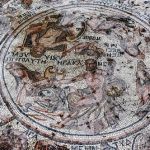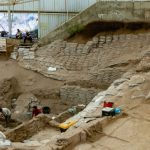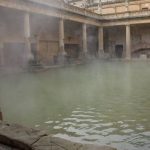 Weird Stuff
Weird Stuff  Weird Stuff
Weird Stuff  Our World
Our World 10 Ways Your Christmas Tree Is More Lit Than You Think
 Movies and TV
Movies and TV The 10 Coolest Stars to Set Sail on The Love Boat
 History
History 10 Things You Didn’t Know About the American National Anthem
 Technology
Technology Top 10 Everyday Tech Buzzwords That Hide a Darker Past
 Humans
Humans 10 Everyday Human Behaviors That Are Actually Survival Instincts
 Animals
Animals 10 Animals That Humiliated and Harmed Historical Leaders
 History
History 10 Most Influential Protests in Modern History
 Creepy
Creepy 10 More Representations of Death from Myth, Legend, and Folktale
 Technology
Technology 10 Scientific Breakthroughs of 2025 That’ll Change Everything
 Weird Stuff
Weird Stuff Ten Bizarre Facts About The Doge Meme
 Our World
Our World 10 Ways Your Christmas Tree Is More Lit Than You Think
 Movies and TV
Movies and TV The 10 Coolest Stars to Set Sail on The Love Boat
Who's Behind Listverse?

Jamie Frater
Head Editor
Jamie founded Listverse due to an insatiable desire to share fascinating, obscure, and bizarre facts. He has been a guest speaker on numerous national radio and television stations and is a five time published author.
More About Us History
History 10 Things You Didn’t Know About the American National Anthem
 Technology
Technology Top 10 Everyday Tech Buzzwords That Hide a Darker Past
 Humans
Humans 10 Everyday Human Behaviors That Are Actually Survival Instincts
 Animals
Animals 10 Animals That Humiliated and Harmed Historical Leaders
 History
History 10 Most Influential Protests in Modern History
 Creepy
Creepy 10 More Representations of Death from Myth, Legend, and Folktale
 Technology
Technology 10 Scientific Breakthroughs of 2025 That’ll Change Everything
10 Outstanding Archaeological Discoveries Unveiled in 2024
A lost Amazonian civilization, explicit erotic frescoes in a Roman house, and the grapeshot-damaged shoe buckle of a rebel Scottish chieftain. Those are just a sample of the outstanding archaeological finds reported during the course of 2024. Read on to find out how researchers have extended our knowledge of the human story through their excavations and deep sea explorations in the past year.
Related: Top 10 Greatest Archaeological Restorations
10 Pompeii Porn
Pompeii, of course, was the ancient Roman city overwhelmed by an eruption of the volcanic Mount Vesuvius in AD 79. The city was blanketed in a thick layer of volcanic ash, which resulted in its spectacularly detailed preservation, and it’s still being excavated.
In 2024, archaeologists came across a mansion complete with wall paintings of an explicitly erotic nature. Pompeii porn, if you will, although the Romans of the time regarded it as completely normal to have walls decorated with frescoes depicting sexual activity. In fact, over the years, researchers have uncovered plenty of erotic frescoes and statuary at Pompeii, which was hidden from public view until relatively recently for fear of offending delicate sensibilities.
If you happen to make it to Pompeii, look for the Via dell’Abondanza, where the house in question is located, which will eventually be on public display. One of the images portrays a sexual encounter between a naked nymph and a satyr, while another shows a barely clothed Queen Phaedra with her stepson Hippolytus. According to Greek mythology, she fell for Hippolytus but then accused him of rape when he spurned her advances.[1]
9 Lost Amazonian Cities
A study published in January 2024 in the journal Science revealed an extraordinary complex of cities in the Ecuadorian Amazon. As the BBC put it, this discovery showed “that the world’s biggest rainforest was once a thriving cosmopolitan hub.” One of the lead archaeologists on the project, Stéphen Rostain, asserted that the new discovery “forces us to rethink the entire human past of the Amazon.”
Airborne LiDAR technology, which uses lasers to create 3D maps of the ground, has allowed researchers to look some 2,500 years into the past. The mapping has revealed some 15 urban centers, a probable 6,000 homes, agricultural terraces, and roads, which Rostain calls “a lost valley of cities.” These existed for around 1,000 years, with a population possibly as high as 30,000, until the site was abandoned by the Upano people who lived there from around AD 300 to 600. As Rostain points out, this sophisticated ancient civilization is unlike any we previously knew about in the Amazon.[2]
8 A Roman Wall
The discovery of a moss-covered stone wall in Italy that was built in the Roman era is interesting but perhaps not terribly thrilling. However, the structure uncovered by archaeologists in the Dossone della Melia forest in Calabria is not just any old wall. Researchers believe that the 1.7-mile-long (2.7-kilometer) defensive wall, bordered by a ditch and revealed by LiDAR ground penetrating radar, has a fascinating historical significance.
Andrea Maria Gennaro, a senior archaeologist at Italy’s culture ministry, told Live Science, “When we realized what it was, it was very exciting. It’s not every day you get to experience history first-hand.” His excitement comes from the probability that this wall was actually built by Roman soldiers to defend against the legendary slave uprising led by Spartacus. Spartacus, of course, was the rebel gladiator who headed an uprising by thousands of Roman slaves in 73 BC.
The excavation at Dossone della Melia also revealed sword blades and hilts and javelin points, indicating that the wall was the site of a pitched battle. We don’t know who won that particular engagement, but the slave revolt was crushed within a couple of years, and Spartacus himself was killed in battle.[3]
7 Human Sacrifice
Researchers working in Panama’s El Caño Archaeological Park excavated the lavish tomb of a Coclé noble who died around 12 centuries ago between AD 750 and 800. The Coclé people lived in central Panama from around 200 BC to AD 1550. The burial contained a rich trove of grave goods, including “a set of earrings made from sperm whale teeth and plated in gold,” according to the Smithsonian Magazine. Lead archaeologist Julia Mayo estimated that the nobleman died when he was aged from around 30 to 40 years.
Mayo also said that because the individual was buried with musical instruments—flutes made from bones—rather than armaments, he may well have been a religious figure. With that in mind, researchers have dubbed the man “Lord of the Flutes.” The tomb also revealed other more gruesome remains of up to 32 people who were likely sacrificed when their master died “to serve as companions,” as Mayo put it. One particular female body was placed beneath the nobleman and may have had “some sort of social relationship” with the Lord of the Flutes.[4]
6 A Clan Chieftain’s Shoe Buckle
The 1746 Battle of Culloden in the Scottish Highlands was Bonnie Prince Charlie’s final fling in his attempt to seize the British crown. This last battle on British soil saw a crushing victory for King George II’s forces against a rebel Jacobite army of mostly Highland clansmen. New excavations at the battle site, which lies some 5 miles (8 km) from Britain’s most northerly city, Inverness, have unearthed some intriguing artifacts.
The National Trust for Scotland announced the new finds in April 2024, and they include a large number of musket balls and fragments of grapeshot. This is evidence of the wholesale slaughter of the Highlanders, some 1,600 of whom were slaughtered in less than an hour. An especially intriguing find was a damaged shoe buckle and a piece of lead grapeshot, with the soft metal of the shot indented with the shape of the buckle.
Archaeologist Donald Cameron explained that the buckle might well have belonged to one of the Highland casualties. Clan chieftain Donald Cameron of Lochiel was hit in the ankles by grapeshot as he charged the Government line. Cameron survived, escaping to France with Bonnie Prince Charlie.[5]
5 Submarine USS Harder
During WWII, the USS Harder, also known as SS-257, sank more Japanese ships than any other American submarine. Launched from Groton, Connecticut, in 1942, the Harder was soon the victim of an unfortunate friendly fire incident when a U.S. Navy Catalina flying boat machine-gunned her off the coast of Panama. Escaping unscathed, the Harder soon saw action against Japanese shipping and, under the command of Sam Dealey, went on to sink 18 Japanese vessels of various classes over the course of six patrols.
But it was on that sixth patrol that disaster struck. Working with two other American subs, the Harder sank several vessels in August 1944 but was then herself sunk by a Japanese depth charge off the Philippines island of Luzon. Her entire crew of 79 perished, and Commander Dealey was awarded a posthumous Medal of Honor. The exact location of the wreck remained a mystery until 2024 when the U.S. Navy’s History and Heritage Command confirmed that a sunken vessel discovered in 3,000 feet (914 meters) of water by the Lost52 Project in 2023 was indeed the USS Harder.[6]
4 Oldest Cave Painting
Researchers have found what is being dubbed the oldest representational artwork ever discovered on the Indonesian island of Sulawesi. Scientists say the cave painting was created 51,200 years ago, and that makes it around 5,000 years older than any other cave painting we know of. Thus, the Sulawesi paintings give a new, earlier date for when we can be sure humans were capable of creative art. The wall art depicts a wild pig and what looks like three human figures.
Speaking to the BBC, Professor Maxime Aubert said, “The painting tells a complex story. It is the oldest evidence we have for storytelling. It shows that humans at the time had the capacity to think in abstract terms.” Excavation leader Adhi Agus Oktaviana said that while humans had surely been telling stories for far longer than 51,000 years, representational art was the only evidence available to prove that. Prof Chris Stringer of the Natural History Museum said that older examples of representational art may well exist in Africa, the cradle of Homo sapiens, but have not yet been discovered.[7]
3 Early Humans
Archaeologists excavating a German cave unearthed remains of humans who they were able to date as having lived between about 44,000 and 47,500 years ago. That makes them the oldest Homo sapiens remains ever discovered in Europe. This discovery means that humans and Neanderthals co-existed for thousands of years longer than researchers previously believed. Neanderthals lived in Europe from around 200,000 years ago until they died out about 40,000 years ago.
Climate conditions were very cold then, and archaeologist Sarah Pederzani said, “This shows that even these earlier groups of Homo sapiens dispersing across Eurasia already had some capacity to adapt to such harsh climatic conditions.” But how did humans supersede Neanderthals?
Speaking to Live Science, paleoanthropologist Jean-Jacques Hublin of the Max Planck Institute for Evolutionary Anthropology said, “We don’t see one wave of Homo sapiens moving into Europe and replacing Neanderthals, but successive pulses of small groups moving into new territory, and then after several millennia finally completely replacing Neanderthals.”[8]
2 Sir Ernest Shackleton’s Last Ship
Born in 1874 in Ireland, Ernest Shackleton became one of the most feted Antarctic explorers of his generation. He was knighted in 1909 for his exploits during the Nimrod British Antarctic Expedition, which came within 112 miles (180 km) of the South Pole. In 1914, another Antarctic foray saw Shackleton and his men trapped by ice floes for 15 months aboard the Endurance.
Shackleton embarked on what would be his final Antarctic expedition in 1921, heading south aboard the Quest. But in January 1922, Shackleton had a heart attack, which killed him. The Quest continued in service right up until 1962, when she sank off the coast of Newfoundland and Labrador, with the precise whereabouts of the wreck a mystery for more than 60 years.
A Memorial University’s Marine Institute expedition discovered the historic ship in 1,300 feet (390 meters) of water in the Labrador Sea. Expedition leader John Geiger said, “Shackleton was known for his courage and brilliance as a leader in crisis. The tragic irony is that his was the only death to take place on any of the ships under his direct command.”[9]
1 The Oldest Bread and the Oldest Cheese
You may well have some bread and cheese in your kitchen right now. But have you any idea how long humans have been enjoying those dietary staples? Previously, the earliest known bread came from Egypt and was just 3,500 years old. However, archeologists in Turkey made a groundbreaking discovery in 2024 while they were excavating at the Çatalhöyük Stone Age site in Turkey. There, they uncovered a fragment of fermented bread that dates back to 6,600 BC, some 8,600 years ago. The unbaked loaf was found near an oven and even had the imprint of a finger clearly visible.
This brings us to the world’s oldest known cheese, an essential companion for bread. A white substance was discovered some 20 years ago in northwest China, and a new study published in 2024 revealed intriguing details about what is now recognized as 3,500-year-old kefir, a form of cheese. The analysis shows that kefir grains, which include yeast and bacteria, were combined with both goat’s and cow’s milk. And some of the microorganisms present in the venerable Chinese kefir are still present in cheese we eat today![10]








